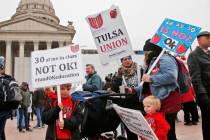Grim reality at root of ‘Bone Yard’
 Last year, the St. Petersburg Times was a finalist for the Pulitzer Prize when it examined a controversial reform school for boys in the Florida panhandle. Since its opening more than 100 years ago, the school has been plagued by youth beatings, deaths and scandals.
Last year, the St. Petersburg Times was a finalist for the Pulitzer Prize when it examined a controversial reform school for boys in the Florida panhandle. Since its opening more than 100 years ago, the school has been plagued by youth beatings, deaths and scandals.
A fictionalized version of the school, dubbed the North Florida Boys' Reformatory, plays a central role in the latest Body Farm novel from Jefferson Bass, "The Bone Yard."
Jefferson Bass is the pen name of the writing team of Bill Bass and Jon Jefferson. Their Body Farm series, featuring Dr. Bill Brockton and forensic science, have been New York Times best-sellers. The series follows the life of Brockton and his Body Farm (a human-decomposition research facility) at the University of Tennessee.
Brockton and his Body Farm are based on Bass' real-life job as a forensic anthropologist who leads the world-famous anthropology research facility, aka Body Farm, at UT.
It sounds a little confusing, especially to new readers. But Bass has created some pulsating novels that blend serious science with an old-fashioned "whodunit" story. They are truly forensic thrillers, and it's difficult to be bored when reading them.
" 'The Bone Yard' is a novel, a work of fiction ... but it's fiction that is deeply rooted in the soil of grim realities," Bass writes.
As "The Bone Yard" begins, Brockton is chased down in Tennessee by Angie St. Claire. St. Claire is a former student of his who's now a forensic specialist with the Florida Department of Law Enforcement, the Sunshine State's version of the FBI.
St. Claire wants his help in proving that her sister's death, by a shotgun blast to the head, was murder but not suicide.
Brockton agrees to help, but the quick trip to Florida turns into an extended stay. During the investigation, they stumble upon adolescent skulls in the thick piney woods in the Tallahassee area. That discovery eventually drags them into a sinister case involving brutality and a mysterious fire which burned down the reformatory decades ago.
Thanks to a diary from one of the boys at the school, Brockton's team finds some shallow graves in a remote area. They discover that this may be the infamous "Bone Yard" area, where some claim the bodies of young boys were dumped after being beaten and killed at the reformatory.
Special Agent Stu Vickery joins Brockton and St. Claire, along with others, as the case gets deeper, uglier and more dangerous. They need all the help they can get.
The mystery is so engaging that Bass seems to forget about what brought Brockton to Florida in the first place — the death of St. Claire's sister. That case is resolved rather quickly late in the story and in an unsatisfactory manner.
Despite that plot drawback, "The Bone Yard" is a bone-chilling story that seems all too real at times.









